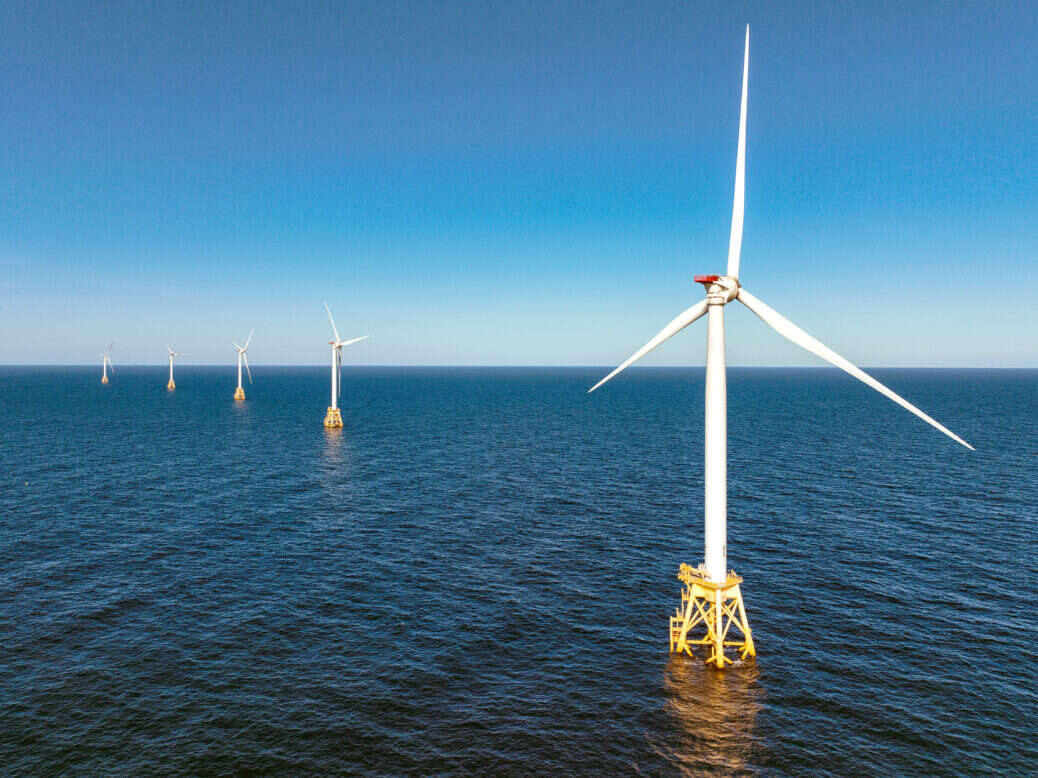
Soaring energy prices this year have led to record-breaking profits in the oil sector. Just this week, BP announced that its underlying profits between April and June had more than trebled compared to last year. Still, analysts are maintaining that big oil is living on borrowed time. More than 90 per cent of the world’s economy is committed to net zero, and even if it is not yet happening fast enough, these pledges mean that policymakers everywhere are planning how they can rapidly phase out fossil fuels.
The UK currently generates around 45 per cent of its electricity from fossil fuels. But plans are in place to move from generating 55 per cent low carbon power today, to 95 per cent low carbon power by 2030. This is a mammoth undertaking that will involve billions of pounds of investment in renewables.
But simply moving to renewables does not guarantee “net zero”. Embodied carbon in renewables – which are emissions produced during transport and manufacturing – mean that renewables retain modest carbon footprints. Indeed, wind power typically produces 10g of CO2 per kilowatt-hour (gCO2/kWh) of electricity, while for solar it is 30gCO2/kWh, according to data from Intergovernmental Panel on Climate Change (IPPC).
Renewables are much cleaner than fossil fuels – natural gas, the cleanest fossil fuel, produces 380gCO2/kWh. But they are not completely free of carbon emissions. This must be tackled if we are to reach net zero.
Solar panels produce the highest level of emissions among mainstream renewables, and this is largely due to their manufacturing process. High-quality silicon in solar cells is manufactured through a highly energy-intensive method called the 'Siemens process', which involves heating trichlorosilane gas to more than 1,100ºC. The efficiency of this process has improved: the energy required to produce 1Wp (‘watt-peak’ – a standard measure of solar power capacity) has fallen drastically, from 16 kilowatt-hours (kWh) in the mid-1990s to 3kWh in 2020. But this remains significant, equivalent to around a tenth of the standard lifetime electricity output of a 1Wp solar cell, which is 30kWh.
When it comes to wind, rapid technological innovation has seen turbines grow both larger and more efficient over time, giving them much lower lifetime emissions. Manufacturing once again has the biggest impact on emissions: analysts at Bernstein Research have calculated that the production of steel and aluminium accounts for most of the emissions from offshore wind, at 62 per cent and 19 per cent respectively. Modelling by BloombergNEF has shown that building enough wind turbines to reach net zero by 2050 will involve 1.7 billion tonnes of steel, a figure just under the entire planet’s annual steel output. This was 1.8 billion tonnes in 2020, according to the World Steel Association.
So what are the solutions? Big carbon savings can continue to be made through energy efficiency and technological improvements, such as manufacturing solar cells that are made of thinner pieces of silicon. Industrial processes need to also be powered not from coal, but from clean energy sources like green hydrogen, which is produced from water using renewable electricity.
Swedish steelmaker SSAB AB is leading the way in the production of green steel, made from hydrogen, with the company aiming to commercially sell the world's first fossil-free steel by 2026. Growing confidence in the technology can be seen in the number of steelmakers now committing to net zero, including giants like ArcelorMittal and Nippon Steel Corp.
Energy-intensive industrial processes can also be avoided if more materials are recycled. “The low-carbon transition needs to be designed with a material focus, with everything designed with a closed loop mindset as it is installed,” explains Patrick Schroeder, from UK think tank Chatham House. “Initially it was important simply to promote renewables over coal and other fossil fuels, but now that the transition is happening and is unavoidable, we need to think more about the circular economy.”
Fortunately, around 90 per cent of material from modern turbines - including steel, cement and copper wire - is already regularly recycled. The tricky part is the blades, which are made from a composite fibre material designed to make them light and durable. At the moment, the main commercial route to recycling a blade is to grind the blind down to produce material that can be a substitute for sand in cement production.
But the wind industry is innovating hard to find a solution where materials can be re-used. Leading manufacturer Siemens Gamesa, for example, unveiled its first fully recyclable product in September 2021: 81m-long blades designed to allow recyclers to separate component materials more easily at end of life. The company’s Jonas Jensen told Spotlight that they remain a “feature product” for the time being, but a number of developers – including France’s EDF, Germany’s RWE and the UK’s Western Power Distribution – have expressed interest for when they come onto market.
Solar panels are also difficult to recycle, due to the way minerals including lead, silver and silicon are combined to form the solar cell. But in the EU, unlike with wind turbines, solar panel manufacturers are already required to ensure all solar panels are recycled. They tend to be processed at traditional recycling plants where glass and metals like copper and aluminium can be extracted in a “rudimentary process” that does not capture the elements of highest value, says Meng Tao, a sustainable solar expert at Arizona State University.
Nevertheless, technological improvements mean nearly 100 per cent of the solar panel can now technically be recycled, with anything that remains becoming a powder that can be used as a substitute for sand in cement production.
[See also: Is nuclear energy a sustainable solution to climate change?]




